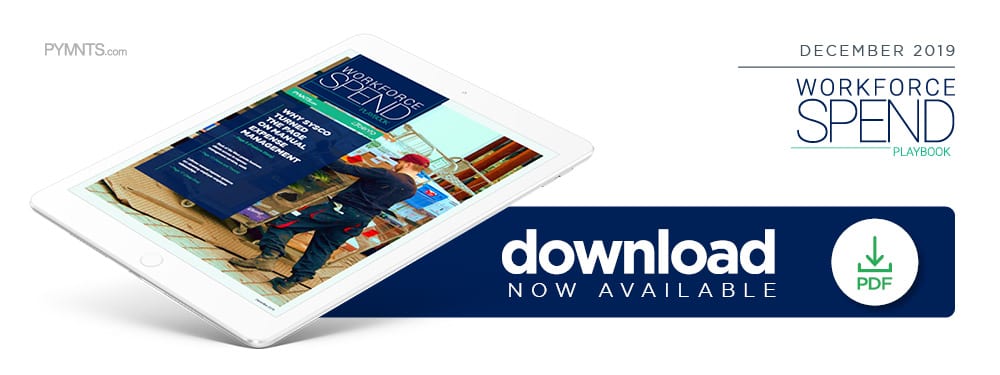Deep Dive: Why Manual Expense Reporting Systems Have Outlived Their Usefulness

Employee reimbursements can be frustrating for all parties involved, even as expense reporting goes digital. Approximately 38 percent of U.S. employees use their own funds for work-related purchases at least once a month, facing them with financial troubles when waiting for reimbursements.
Expense reporting has moved from having each employee file expenses via spreadsheet, but solutions have yet to eliminate all the delays that parties face during this monthly process. The online software that companies rely on for expense management services often requires employees to manually scan in and enter their receipts. Workers must then review these scans before funds can be disbursed, often later than they would like. This means that employees away on business, for example, must hold onto their paper receipts if their companies’ expense management solutions do not allow for receipt submission or categorization during travel. Manual scanning and review increases the process’ costs, totaling an average of $26 per report if real-time spend solutions have not been implemented.
Manual reporting can also result in some expenses slipping through the cracks, meaning employees have missing funds while employers are unaware of the issue. Two out of every five employees who use their own funds for work-related expenses have experienced cash-flow troubles due to lags in the spend management process, according to recent research — resulting in approximately $1.6 billion in unclaimed funds with employers, which can strain employer-employee relationships.
These delays can also weaken employees’ financial security, and seriously affect their work productivity. Ironing out companies’ existing expense reporting kinks is, thus, crucial for firms worldwide, but they must first examine how reimbursement frustrations are impacting their employees before they can upgrade their systems accordingly.
Expense Delays Can Seriously Stall Revenue
The average costs and wait times for reimbursements are not all that high, with employees typically waiting up to two weeks to receive their funds. The average value of work-related expenses per employee is also relatively small, with the highest being approximately $116.30 for millennial and Generation Z workers. However, it is important for companies to recognize that even minuscule delays for seemingly small amounts can have harsh, lasting consequences for their employees and operations.
The annoyance of waiting for funds is just one small aspect of a larger problem in the expense management world. Waiting for reimbursement checks can cause real financial hardships for employees, who then become less likely to take on business opportunities in which they may have to risk their own funds. Forty percent of employees agreed that they would stop making business expenses if the reimbursement period were significant, and more than 20 percent would stop traveling for work altogether. A lack of travel naturally leads to a lack of new business, which then affects revenues and overall operations.
Companies must implement spend management tools that can help them avoid this fate, and those solutions need to reduce frictions throughout the entire process — not just when employees file their receipts, and when they finally receive their funds. There are several pain points within manual expense systems that must be addressed before employees file, notably when and how they can access expense reporting tools. Many are unable to send receipts when they are traveling, or must wait until human workers review problematic line items before they are cleared for reimbursement.
Automated solutions could alleviate these issues, as they could be connected to users’ phones or other devices, allowing them to snap photos of their receipts and keep up with their expenses without sifting through growing piles of paper. Such solutions utilize automation features that instantly categorize spending, preventing employees from having to wait until their trips are over to fill out reimbursement forms.
These tools can also connect relevant data from other departments or services within companies, eliminating lengthy interpersonal communication processes that wind up costing participants both time and money. This can be especially critical for small businesses, which do not have the same resources as Fortune 500 firms. Small businesses can also lack the extensive finance and compliance departments of larger competitors, which may frustrate employees with questions surrounding the process.
The Need For Employee Education
A lack of understanding around reimbursement processes can contribute to delays that increase costs and financial strain on both employers and employees. Many of those who work outside their companies’ budget offices are not versed in reimbursement or expense procedures, meaning they are often contacted regarding information they may have missed when handing in their receipts or requests. They may also need help with basic definitions and parameters, such as which purchases qualify as business expenses, or what data is needed to begin reimbursement requests.
Automated expense software would eliminate these problems by requesting this information as part of the process, preventing employees from wading through confusing paperwork, while familiarizing them with the expense management process. Corporate cards can also be digitally linked to online reporting systems, for example, automatically sorting purchases. Employers and employees can see spend laid out in near real time, which could help manage overspending.




